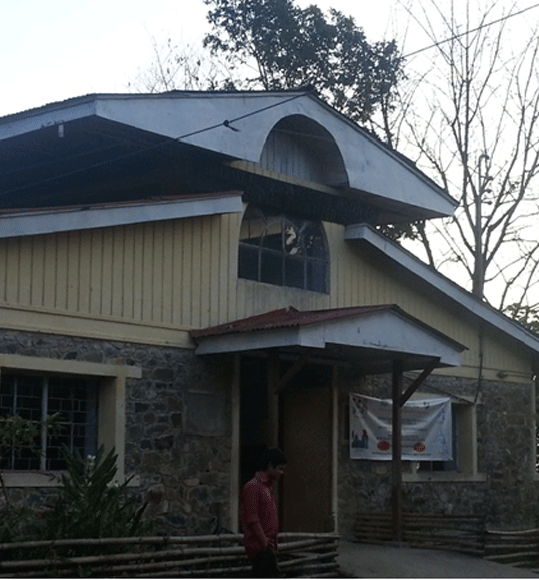Facilitating high quality learning for the visually impaired

Nidhi Arora
I first heard of Namchi Blind School in 1999- 2000 – on one of the first trips to Sikkim. But I finally visited the school only in 2012 or thereabouts. I was amazed by the enthusiasm of the students. Normally, when we work with a school in a small town or village, we find the children a little apprehensive about big city education. But here, the young people were all very confident.
They had a complete support structure in place – an alumni network that provided real time feedback on living conditions, educational aids, career prospects etc, a support group that prepared them for the big degree college, and also a network in the main city where they go for graduation.
Someone hand holds them, finds them places to live, goes with them for admissions, etc.
The school itself – the only blind school in Sikkim – sits in a beautiful valley, far from the madding crowd of the ever bustling and growing city of Namchi.
One of the things we love doing at Esha, is aiding this journey to the big college, or to career. One of the key enablers of this is competitive exam content and current affairs. Another thing that we notice, helps the students is a flair for English. At the Namchi school, the primary language is Nepali. The children don't understand Hindi or much of English, but they all know they have to go to Delhi for competitive exam prep after graduation in Gangtok.
Namchi was the perfect school to use the Audio content – because the students were aware, there was a great support system in place and most importantly, the school leadership – the principal and the teachers, were ambitious for their children. The children were also very confident.
So we took requirements, sent them to our volunteers, got some response and uploaded the content to the online library.
We also distributed mp3 players to the students. These are for the use of the students. They can update the content on their SD card at any time. If they have a internet enabled mobile phone, they don't even need the mp3 players. They can just connect to the net, download content and store it on their mobile phones.
Our dream was to create a national resource that makes knowledge accessible anywhere, to anyone.
We evaluated the 3 ways in which knowledge can reach the intended beneficiaries and came to the following conclusions.
Books and Print Media:
This was a great thing, but the actual literacy rate in India is very low; the English literacy rate being even lower. Also, most people in India can understand 2-3 languages, but can write maybe, one. With difficulty. So we had to let go of this medium. It wouldn't fit the needs of the people we want to work with.
Audio Video: This is a great option. It's very rich. Anything we see in pictures and hear at the same time, we remember for a long time. This also transcends the barrier of literacy. Even if one doesn't know the language, the images themselves tell us a lot. But the cost of AV installation was huge. For a group to access, we needed at least one projector. The minimum cost of a projector was Rs 18,000. Further, production cost of the content was way too high. Youtube already existed in that domain, so we decided to not replicate the effort. Those who can afford it, have youtube. If we ever create AV Content, we will put it there.
That's how we arrived at Audio. Audio can be produced at home. It can be consumed using a simple mobile phone or a 60 rs Chinese player. It can be uploaded and redistributed. No projector is necessary. It can be heard on a normal computer with speakers, which every blind school has and most other remote schools have. The download sizes are small – from 1 MB to maybe 15 MB for the longest file.
And this is how, in 2010, we zeroed in on Audio as the best way to create this online knowledge resource. And started calling it – The Great Bridge. Because it transcends the barriers so beautifully.
The Principal sir discusses the current structure, needs of the students, his understanding of their current infrastructure and what can help, while we take notes.
Requirement Gathering from the students.
Demonstration of audio content on a cell phone. Questions answered – how to search, how to download, how to send you requirements. Is the audio clear enough? Can we do anything to make it better?
Hard work over, and now we can pose for a picture together!
(The writer is member of Esha Clabil, an NGO working on braille education)

















